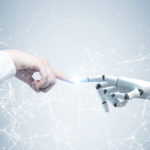Neil Pattemore discusses how the rapid developments in Artificial Intelligence (AI) will alter the way that we diagnose and repair cars. But could it impact the independent workshop negatively as well as positively?
The potential for deep learning and AI is almost limitless – certainly well beyond what most people can imagine. The basis is to create machines that have the characteristics of the human senses, as well as the ability to interpret and rationalise; the ability to assimilate the world around them through vision, sound and touch, but then to be able to assess and interpret this information, and turn it into actions.
AI divides public opinion, with technology protagonists promoting the benefits, and sceptics being less trusting of new technologies and seeing threats in the workplace. However, many believe that AI can be developed and implemented in ways that will dramatically improve our lives.
A common example of AI is already in many people’s lives, with Siri on smartphones and Alexa in homes. Behind this voice- controlled interface is substantial computing hardware, access to huge amounts of data, and powerful data analytics.
From the vehicle repair workshop perspective, would this be a threat or a benefit? Imagine a workshop where an AI device responds to a technician asking “how do I test component XYZ?”, or “order a new XYZ part for a vehicle with the following VIN number”. With all the interest around AI, it’s natural for businesses to explore the options, but those looking to implement the technology have to be realistic about its current capabilities and limitations. AI is reaching maturity in some areas, like recognising objects in images, but work still needs to be done for other tasks. Researchers continue to evolve ‘neural net’ architectures, where databases become ‘self- learning’, but these are not yet mature enough to be fully implemented.
So, what will the implementation of AI bring to the automotive sector? Not only the competency to allow automated in-vehicle systems and autonomous vehicles to function correctly, but also changes in how the vehicle is diagnosed and repaired in the workshop.
There is also some overlap between these two elements. If we look at the potential implementation in the workshop, there are both good and bad aspects. As the vehicle becomes more intelligent and more capable of diagnosing itself as part of its automated functions, it will eventually be monitored remotely when it is being driven, either as a direct indication that a fault has occurred, or as the system monitoring to predict when a fault will develop or a replacement part will be needed. This helps enormously before the vehicle comes to the workshop to identify the fault and the parts needed.
Once a vehicle is in the workshop, the diagnostic tools will be able to guide both the faster identification of the fault and the subsequent repair method. However, the years of knowledge and experience previously needed by the technician to bring order from chaos is now part of the AI functionality, allowing ‘rookie’ technicians to become experts. The AI has already monitored thousands of similar vehicle models and their problems, and is able to recognise patterns, which in turn become predictions and knowledge – in human terms ‘experience’. One of the leading diagnostic tool manufacturers is already using AI, and is processing over a billion vehicle repair activities a month. The valued human attributes of knowledge and experience are now an electronic product.
More positively, AI can also resolve problems that seem either difficult or impossible. For example, 3DSignals is using deep learning AI technology to study the sounds made by a car, and when it detects that the sound is different, it can pinpoint the source of the problem – sometimes even before the customer or the technician knows a problem exists.
In reality, we are in the early stages of the development of AI. In the same way that a child’s early years are shaped by external stimuli like pictures, music, language, and human interaction, AI also evolves and adapts. This is positive, as we have time to shape AI in a positive direction.
The debate on the long term effects of AI ranges from Elon Musk warning of a “fleet of artificial intelligence-enhanced robots capable of destroying mankind”, to Google’s Larry Page foreseeing AI as supporting advancements in human progression. For AI to evolve in a positive way, we need to involve the humanities, law, ethics and engineering – both technical and social. None of us can predict what AI will become in the future, but there needs to be a debate to ensure that humanity still has control over the machines.










